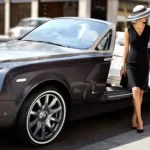Here is a list of cars we didn’t like after the release of the Indians. Read on to learn more about them.
When you look at the sales of some models in the Indian car market, you will see that some models did not last long after their launch. Some cars received bad reviews due to lack of performance on the road, while others disappeared from the showroom because they did not gain the necessary popularity.
A list of 6 cars that Indians “didn’t like” after launch
Tata Nano

In the first two years of its launch, the model that refused was the Tata Nano. The car is very economical and compact than any other model, which makes it easier to move and park. But Tata’s marketing plan backfired when it advertised it as the cheapest car in the world. Being the cheapest car doesn’t always promise quality, does it? The poor quality materials used led to very serious mechanical defects in the car, including a fire due to faulty wiring. Perhaps, if Tata focused on improving the quality of construction instead of keeping it cheap, the model could last longer.
Renault Lodgy

Next on our list is the Renault Lodgy, an MPV that did not impress Indian buyers with its design. He did not perform better than his competitors in that segment. He failed the 0-star GNCAP crash test in an awkward situation. The Indian-made MPV structure was also unstable. Another reason for its failure was that when Lodgy tried to succeed in the market, Renault could not serve in all cities of the country. So, even though it was a quality service, access to it was limited and buyers did not like the model more.
Maruti A-Star

The A-star hatchback from Maruti has become one of the rare models of the brand that does not work well. Its BS4-compliant 1-liter gasoline engine had a 5-speed manual transmission and a mileage of 17 km / h. The A-star failed due to the narrowness of the interior, the really uncomfortable rear seats, the poorly designed cabin and the poor fuel economy. Its price was about 3-4 lakhs (the price of the former exhibition room), which was higher than the cost for a small hatch like the A star of that period.
Another reason was his excellent performance and the fact that the popular Santro, Alto, Wagon R and Hyundai i10 A-star were destroyed before they had a chance.
Suzuki Kizashi

Kizashi Suzuki’s entry into the luxury car segment in India was a resounding failure. This luxury sedan failed due to the very high price. It exceeded Rs 17 lakh as the car was brought to India as a fully built unit. Kizashi had strong competition between the Volkswagen Jetta and the Chevrolet Cruze, both of which offered the same features and convenience at a much more affordable price.
Maruti SX4

Maruti’s SX4 has suffered many mechanical failures since its first launch in 2007. Transmission problems, leakage of rear axle seals, gas pedal sticking and airbag sensor light were just some of them. Powered by a 1.6-liter VVT DOHC petrol engine, the SX4 had good ride quality. However, with the release of more diesel models in that segment, the SX4 lost its place and left the competition. In 2011, Maruti tried to rebuild the SX4 and launch it again; however, it was too late for the model at the time. The sedan was to be discontinued in 2014.
Hyundai Xcent

Xcent was launched in 2014 with the largest download space available in the segment at the time. Loaded with a list of worthy features, Xcent could only fight well if its ride quality was better. It also didn’t offer the same comfort while driving as the Amaze. The Xcent had engine choices similar to the Grand i10 – a 1.1-liter diesel engine and a 1.2-liter gasoline engine. Bending in the face of competition, Xcent ended up opting for mainly naval operations instead.
Also read:
Cars that have failed in India
Why are D-segment sedans not popular in India?
List of popular Indian cars for sale and their waiting period






